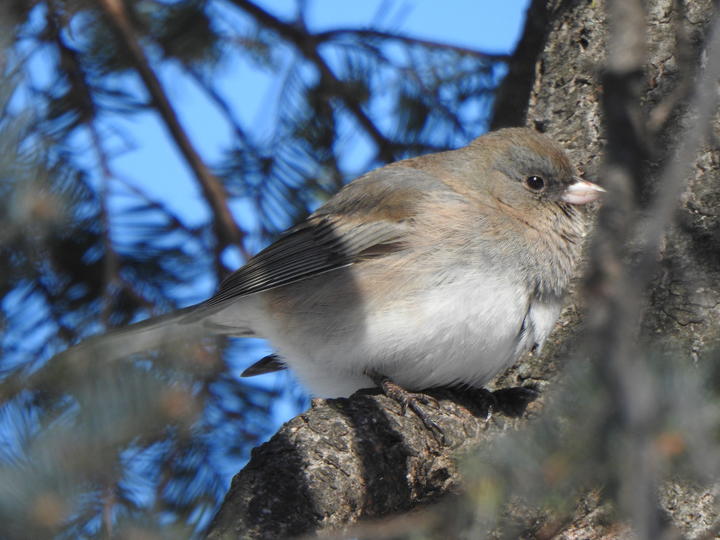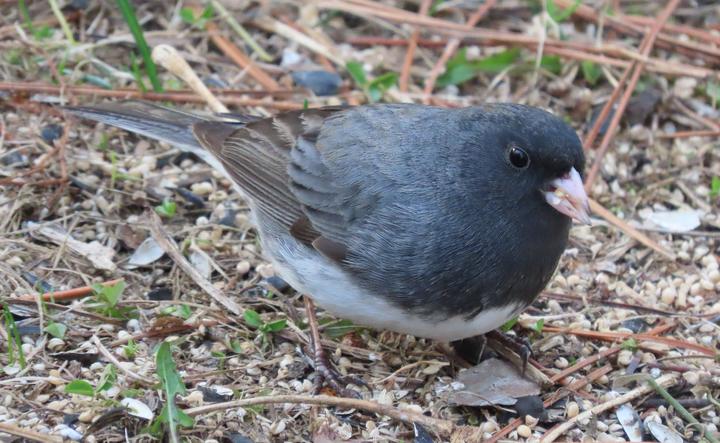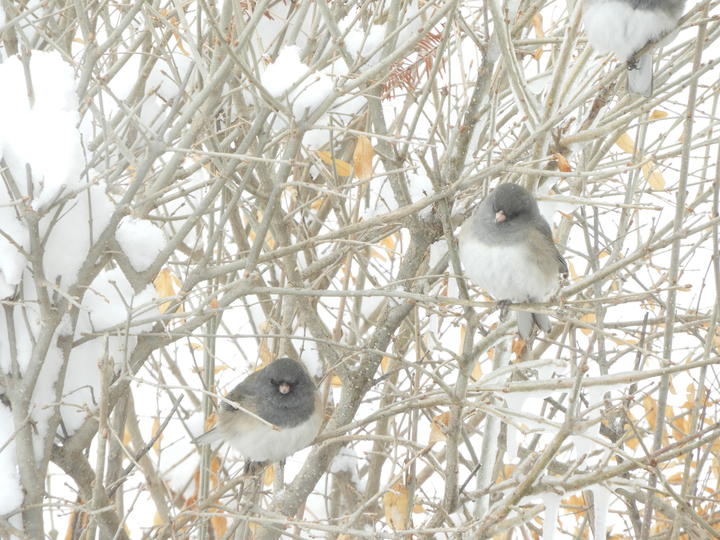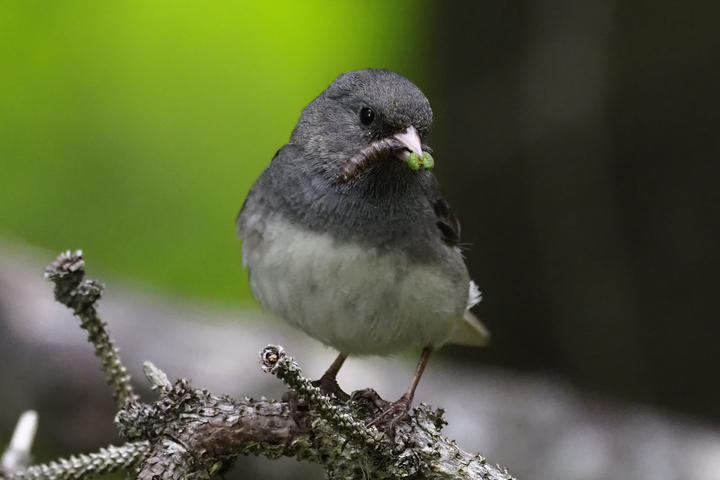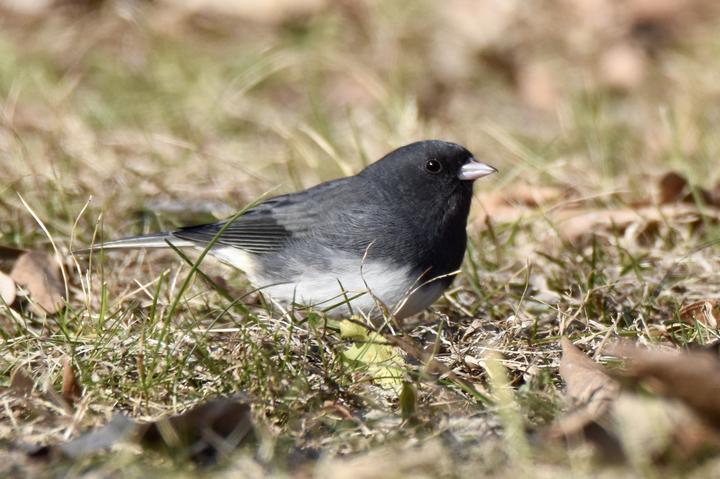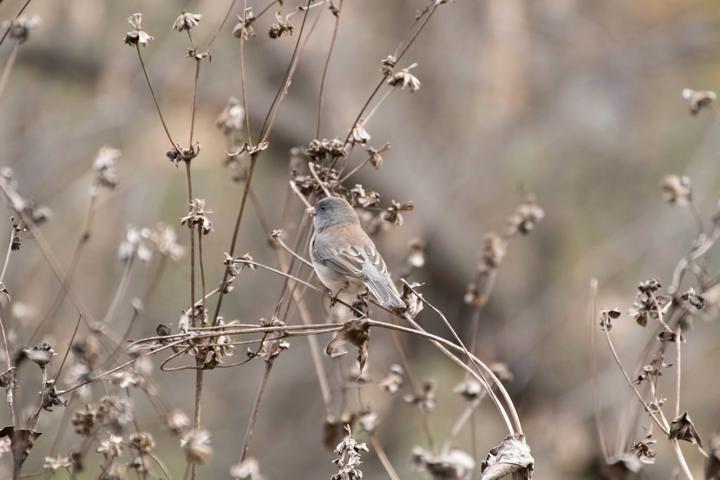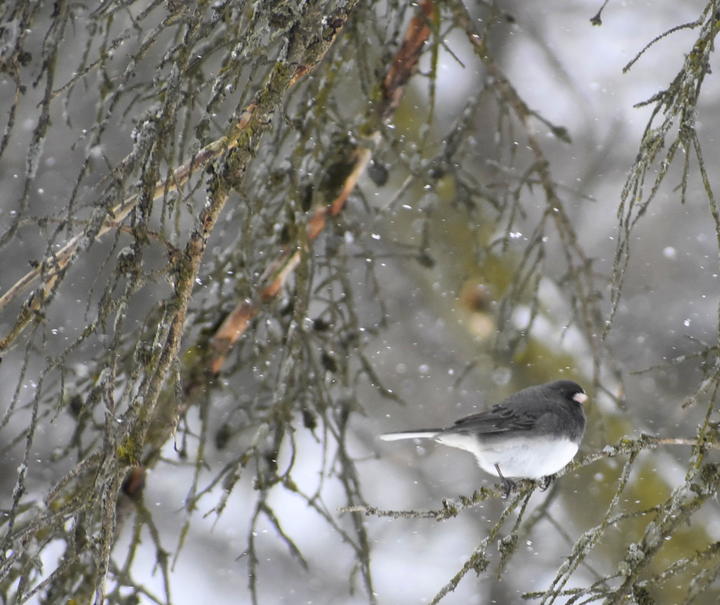More names for this bird
Dakota: Wakasaŋsaŋ (sparrow)
The Dakota and Anishinaabe were among the earliest people to name Minnesota’s plants and animals, as well as to understand them in relation to Minnesota’s climate and seasons. Those original names are still in use, and several are included on the Season Watch website. However, complete translations were not available.
Latin (or scientific name): Junco hyemalis
The scientific community has a convention of assigning agreed-upon Latin names to every kind of organism. Using scientific names helps people communicate confidently about the same organism and organize lifeforms based on how closely related they are.
Page contents
About the dark-eyed junco

November 27, 2021, Hennepin County, Minnesota
Photo © Ivan, some rights reserved (CC-BY-NC)
iNaturalist observation
About the dark-eyed junco
- The dark-eyed junco is a type of sparrow that has various colorations, but in Minnesota they tend to be dark to light gray with white outer tail feathers and a pink bill.
- Juncos eat mostly seeds, but in spring and summer can be seen eating caterpillars, ants, wasps, flies, beetles and butterflies.
- Parents incubate their eggs about two weeks. Roughly two weeks after hatching, young leave the nest.
- During winter and migration, juncos can commonly be seen in fields, parks, roadsides and gardens.
- Fun fact: The dark-eyed junco is one of the most common birds in North America and can be found across the entire continent, from Alaska to Mexico, from California to New York.
- Dark-eyed juncos migrate. Expand the "Migration animation" section below to learn more.
Migration animation
Migration animation
Click the full-frame icon (lower right corner of video) to play at full size.
More about eBird's abundance animations
eBird data from 2006-2020. Estimated for 2020. Fink, D., T. Auer, A. Johnston, M. Strimas-Mackey, O. Robinson, S. Ligocki, W. Hochachka, L. Jaromczyk, C. Wood, I. Davies, M. Iliff, L. Seitz. 2021. eBird Status and Trends, Data Version: 2020; Released: 2021. Cornell Lab of Ornithology, Ithaca, New York. https://doi.org/10.2173/ebirdst.2020
Visual guide to phenology
Watch for changes in dark-eyed juncos' presence (or absence), abundance, and behaviors at different times of year.
Note to observers
This page explains general clues to watch for when observing dark-eyed junco phenology. However, this page does not explain how to identify this bird or collect data in a standardized way.
- For help with identification, see The Cornell Lab's All About Birds.
- For guidance on collecting data, see Nature’s Notebook.
Audio resources
Visit All About Birds for recordings of songs and calls by dark-eyed juncos.
Graphs and historical data
Note: The Orientation Center provides a map, as well as information on reading graphs; interpreting summary statistics, who collected the data and how; and how to download datasets for independent exploration.
First flock of migrators (flying south)
- Earliest: September 17 (occurred in 2007)
- Average: September 30
- Latest: October 17 (occurred in 1996)
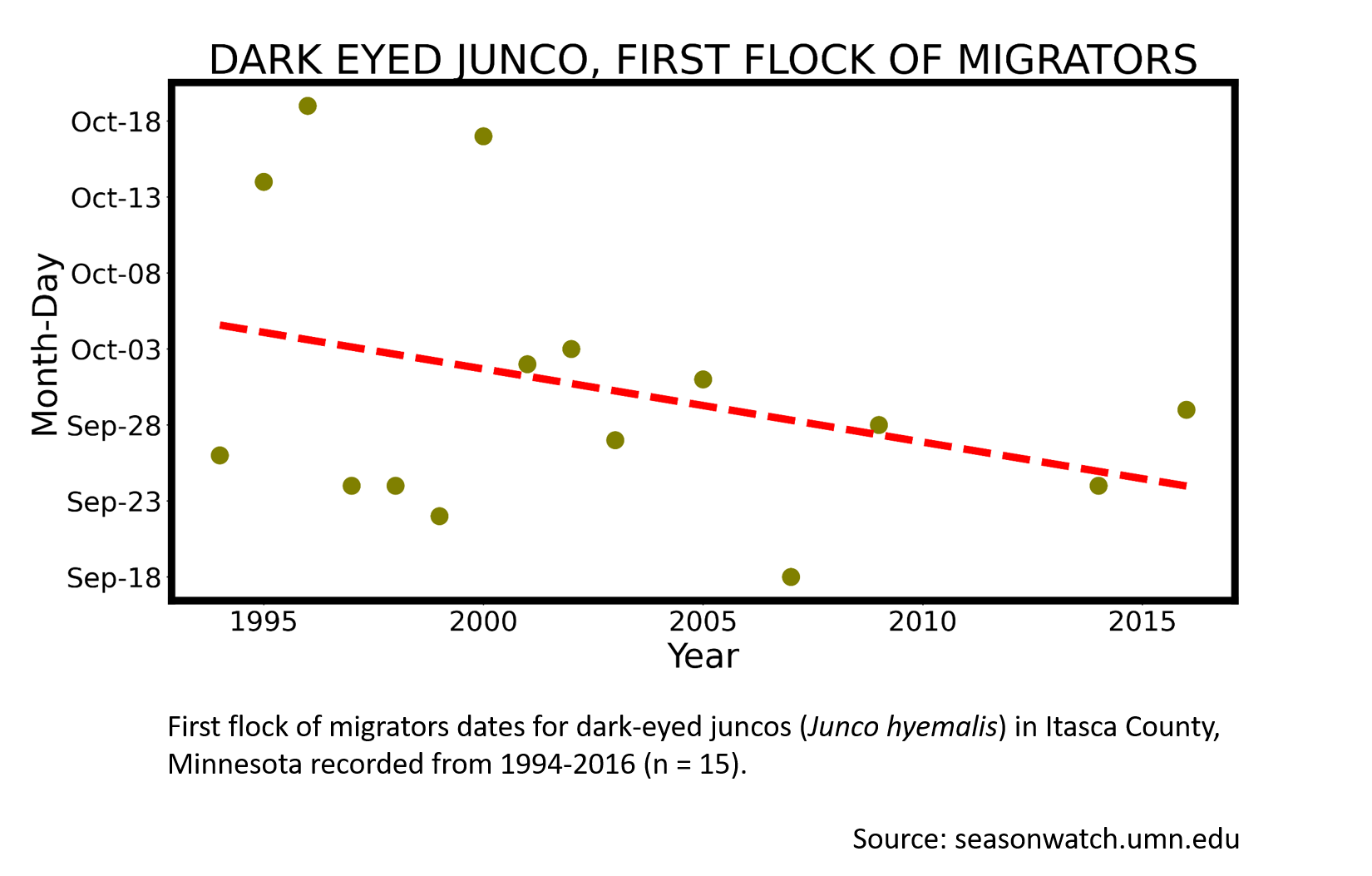
More resources
Keep exploring Season Watch
Keep exploring Season Watch
Co-author: Jayme Hogan, Minnesota Master Naturalist
